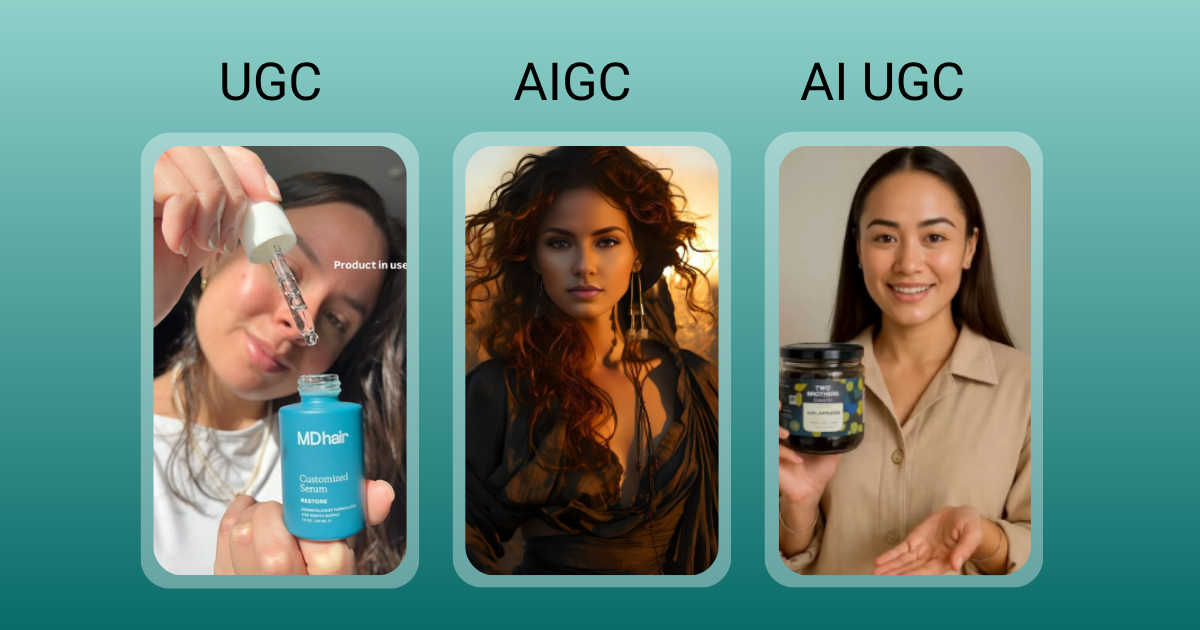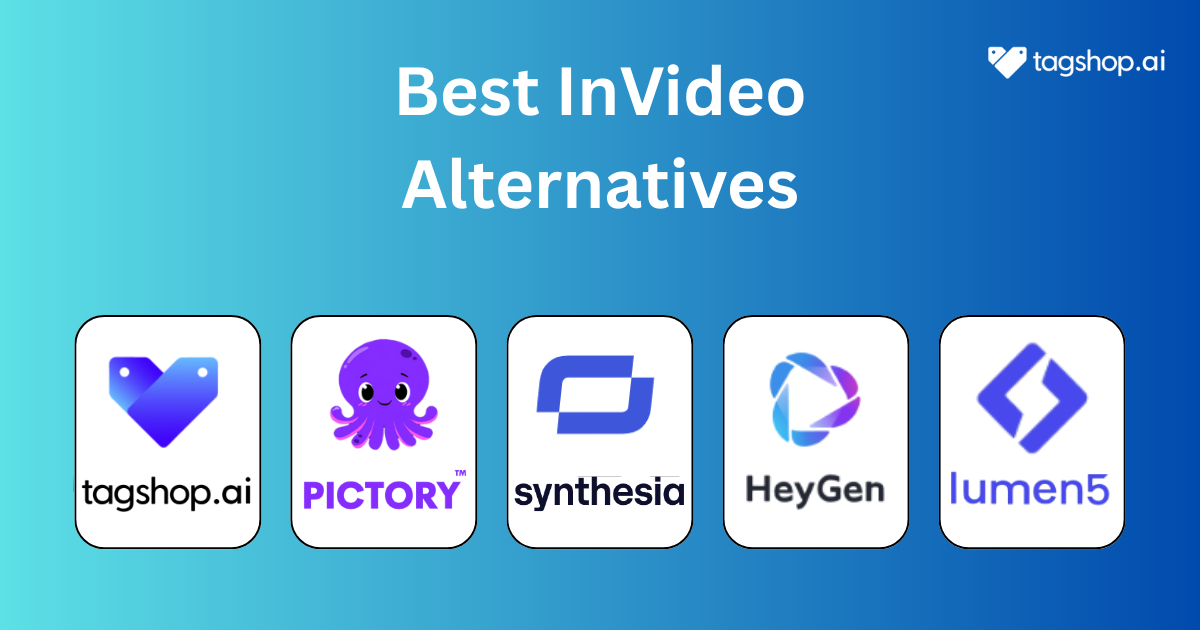What is the Difference Between UGC, AIGC, and AI UGC?
With the arrival of artificial intelligence, content creation has changed forever! What once was limited to customer selfies and influencer shoutouts has now expanded to AI-generated UGC, blogs, script, videos, and everything in between.
But this explosion of content options brings a new set of challenges:
- Audiences crave authenticity, but traditional UGC is slow and inconsistent.
- AI content is fast, but risks feeling robotic or off-brand.
- And marketers are stuck asking: Which kind of content actually works—and when?
That’s why, for marketers and creators, it is important to understand the difference between UGC (User-Generated Content), AIGC (AI-Generated Content), and the increasingly popular AI UGC (UGC-style AI Video).
This blog breaks it all down simply and clearly, with real use cases. So let’s get started!
What is UGC (User-Generated Content)?
UGC or User-Generated Content refers to the content created and published by real users, customers, or fans. NOT the brand itself. Simply, it’s content made about your brand, by the people who love or use what you offer!
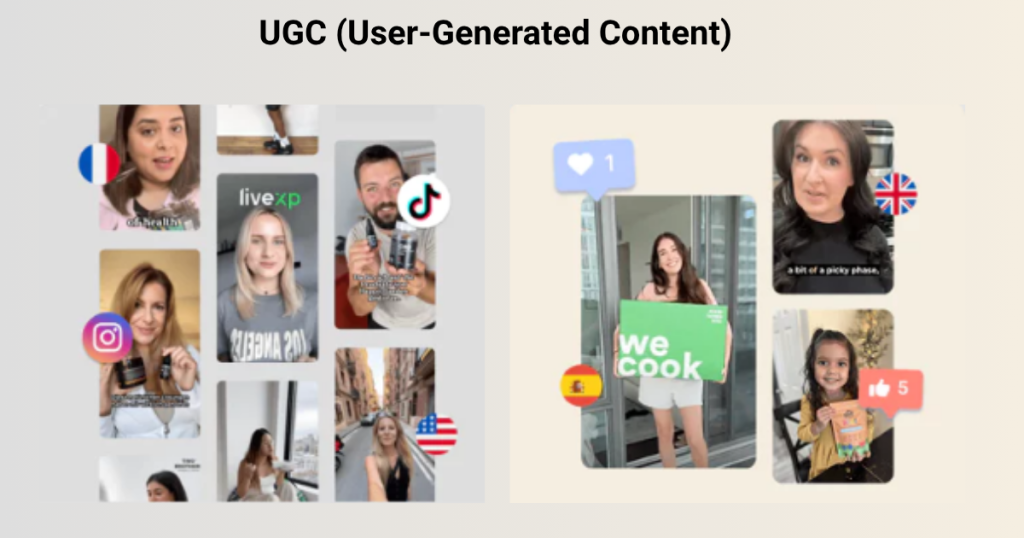
UGC can be anything that a user shares involving your brand — product reviews, Instagram posts, unboxing videos, customer testimonials, etc.
Benefits of UGC:
- Authenticity and Trust: Real people’s words are more trustworthy than marketing claims.
In fact, 6 out of 10 people believe that UGC is the most authentic form of content. - Social Proof: UGC proves to be the best social proof content, building confidence for new customers.
- Community Engagement: When your audience participates in trends or campaigns, they consequently become part of your brand story.
Limitations:
- Inconsistent Quality: Not every user can create Instagram-worthy content for your brand.
- Limited Control: Being user-generated content, brands usually don’t have much control over the message or look.
- Legal/Usage Rights: Using UGC without permission may sometimes lead to legal complications.
What is AIGC (AI-Generated Content)?
AIGC stands for AI-Generated Content, which is exactly what it sounds like – content generated entirely from AI tools with minimal human interaction. Basically, just intelligent algorithms creating text, visuals, and even video content.
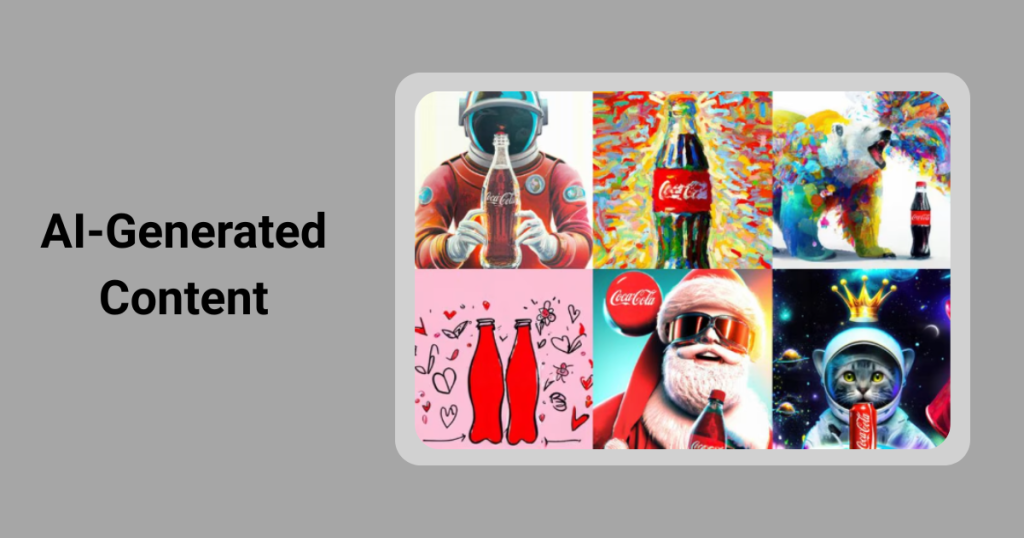
Types of AIGC:
- Text: Blogs, social captions, emails (For example, creating a blog using ChatGPT)
- Visuals: Digital arts, banners, designs (e.g, DALL-E, Midjourney)
- Videos/Voiceovers: AI avatars, deepfake videos, synthetic voice content.
Benefits:
- Scalable and Fast: With AI, it’s quite easy to create large-scale content in just a few minutes.
- Cost-Effective: AI helps cut production costs, making AIGC a cost-effective method.
- Customizable: AIGC offers great control over the content as you can adjust tone, style, and format with ease.
Challenges:
- Robotic/Generic Content: Of course, AI-generated content often lacks the originality and warmth of human creativity.
- Fact-Checking and Human Oversight Required: While AI is smart, it is not always accurate. Thus, it is required to keep a human in the loop to maintain quality.
What is AI UGC (UGC-Style AI Video)?
AI-assisted user-generated content, as the name suggests, is AI-generated UGC designed to look and feel like traditional user-generated content. Powered with AI, it mimics the casual and relatable vibes of real people sharing real opinions.
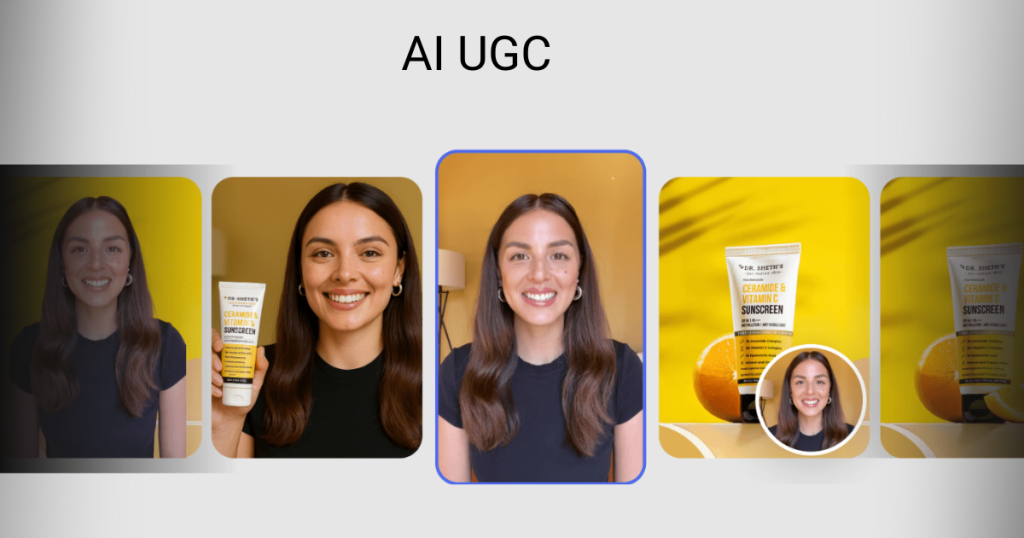
Key Distinction:
AI UGC is where tech meets trust. It combines the speed and scalability of AI with the natural, unscripted style of authentic user content.
Example:
AI avatars are doing product demos in a selfie-style format.
Well-scripted testimonial videos generated by AI that look like real customer reviews.
Benefits:
- Scalable Authenticity: AI-powered UGC feels quite genuine, even at high volumes.
- Full Creative Control: From script writing and style to video background, everything is in your control.
- Sense of Authenticity: AI UGC brings the same authentic feel as UGC.
- Faster Production vs. Real UGC: As you are not dependent on influencers or customers to deliver the content, content production gets faster.
Use Cases:
- Paid Ads: Create scroll-stopping, video ads for performance marketing.
- Product Explainer: Create demo videos in a user-first tone.
- Influencer-style Reels: Build trust without needing an actual influencer.

Comparison Table: UGC vs. AIGC vs. AI UGC
| Feature | UGC | AIGC | AI UGC |
| Creator | Real users | AI models | AI models |
| Authenticity Style | High | Varies | High (mimics UGC) |
| Control | Low | High | High |
| Cost | Variable | Low | Low to Medium |
| Scalability | Limited | High | High |
| Speed | Slow | Fast | Fast |
| Best For | Social proof, trust | Blog content, automation | Ads, reels, scalable user-style videos |
When to Use Each Type: UGC vs. AIGC vs. AI UGC
It is essential to understand when you need UGC, AIGC, and AI UGC. Depending on your brand goals, timeline, and content type, here’s when to use each:
Use UGC When You Need Authenticity
If you want to build trust in your brand and connect with your audience on a personal level, go for user-generated content. UGC content is best for showcasing real customer experiences, creating a sense of community, and gathering social proof. UGC shines on social media, product pages, and campaigns where authenticity is crucial to drive engagement.
Use AIGC When You Need Content on a Large Scale.
Need to deliver a bunch of content by tomorrow? AI-Generated Content is your go-to. Whether you need blog posts, product descriptions, or email copies, AI tools such as ChatGPT can help you create high-volume content quickly. If you want to scale your marketing efforts or experiment with different formats while saving time, AIGC can help. Just make sure to review and refine before publishing.
Use AI UGC When You Need Authenticity at Scale
AI UGC is surely the new trend! If you want ai videos that look and feel like authentic user-generated content, AI UGC is perfect for your brand. Without even relying on real customers or creators, you can create product demos and scripted testimonial-style videos using AI avatars. It is ideal for ads, product explainers, and short-form social content where speed, scale, and consistency matter! You get total creative control, faster production, and a UGC vibe that drives engagement.

Final Thoughts
Summing up this read, UGC, AIGC, and AI UGC each bring something unique to the table. For instance, UGC offers authenticity, AIGC offers speed and scale, and AI UGC blends both, offering UGC with AI.
The future of content isn’t about choosing one over the other. Rather, a hybrid strategy must be developed that balances authenticity, scalability, and innovation. As audiences crave relatable content and brands need to move fast, AI UGC is becoming a go-to solution for modern marketers.
Ready to get the ball rolling? Platforms like Tagshop AI make it extremely easy for you to generate UGC-style videos at scale—no cameras, no waiting, just high-performing content powered by AI.
